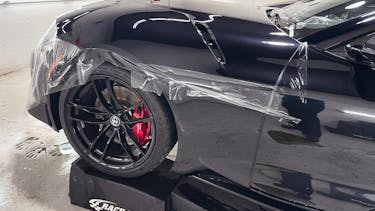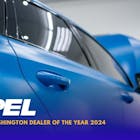3M vs XPEL: Which Paint Protection Film is Right for Your Vehicle?
While 3M has a long history of providing paint protection, XPEL’s cutting edge technology provides a more robust barrier against rock chips and road grime.

How do these two PPFs compare and which one is right for your vehicle? For the last 13 years, we have prided ourselves on providing the best quality products and services in the greater Seattle area. We firmly believe XPEL offers the highest level of protection and finish, which we’ll explain in these five different comparisons.
1. History and Reputation
3M is a household name, known for innovation across countless industries. They actually pioneered the concept of paint protection film decades ago for military use, eventually adapting it for the automotive world. Their reputation for durability and scientific development is well-earned.
XPEL, on the other hand, is a company entirely focused on vehicle protection. Founded in the late 1990s, XPEL made its mark by innovating self-healing technology — a game-changer in the PPF market. Today, XPEL is a gold standard among professional installers and luxury car owners.
Takeaway:
- 3M is backed by decades of general innovation.
- XPEL is laser-focused on automotive surface protection.
2. Product Features and Technology
3M Scotchgard Pro Series offers excellent clarity, stain resistance, and a strong self-healing layer that can fix minor scratches with heat exposure (like sunlight or warm water). Their film is known for being very slick to the touch, making it easier to clean.
XPEL Ultimate Plus leads with its ultra-clear, thick, and highly self-healing film that is almost invisible when applied correctly. It also has a hydrophobic (water-repelling) top coat, making maintenance even easier. XPEL’s film edges slightly ahead in resisting yellowing over time.
Takeaway:
- 3M provides reliable self-healing and slick surface protection.
- XPEL offers deeper self-healing capabilities and better long-term clarity.
3. Installation and Customization
3M installers rely on a mix of pre-cut templates and manual trimming. While their templates are good, they’re not as extensive as XPEL’s.
XPEL has invested heavily in their DAP (Design Access Program) — a massive database of thousands of precise, model-specific patterns. This minimizes the need for cutting on the vehicle itself, reducing risk and ensuring a near-perfect fit.
Takeaway:
- 3M offers good installation options, but may involve more cutting.
- XPEL offers industry-leading, cut-free installation precision.
4. Warranty and Durability
Both brands offer solid warranties:
- 3M’s highest quality Scotchgard™ Pro Series offers a 10-year warranty against defects like yellowing, bubbling, and cracking. 3M’s other PPF series come with either a 5 or 7 year warranty.
- XPEL also offers a 10-year warranty, with a strong reputation for honoring claims quickly and professionally.
In real-world use, many installers and customers report that XPEL’s film holds up slightly better over long periods, particularly against yellowing and environmental damage.
Takeaway:
- Both offer 10-year warranties, but XPEL is often praised for slightly better long-term durability.
5. Price
3M PPF is often a little less expensive than XPEL — sometimes by about 10–15%, depending on the installer and location. However, the slight savings may come at the cost of some advanced features.
Takeaway:
- 3M can be a more budget-friendly option.
- XPEL usually commands a premium price — and delivers premium protection.
Final Verdict: 3M vs XPEL
Both 3M and XPEL offer excellent paint protection solutions. Choosing between them really comes down to your priorities:
- Choose 3M if you want reliable protection from a trusted brand at a slightly lower price point.
- Choose XPEL if you want the best possible clarity, self-healing, and installation precision — and are willing to pay a little more for it.
No matter which brand you go with, make sure you select a qualified, experienced installer, as even the best film can underperform if not applied correctly!
If you're looking to protect your vehicle with PPF near Seattle, our experts can answer any questions and help you make the best choice.



